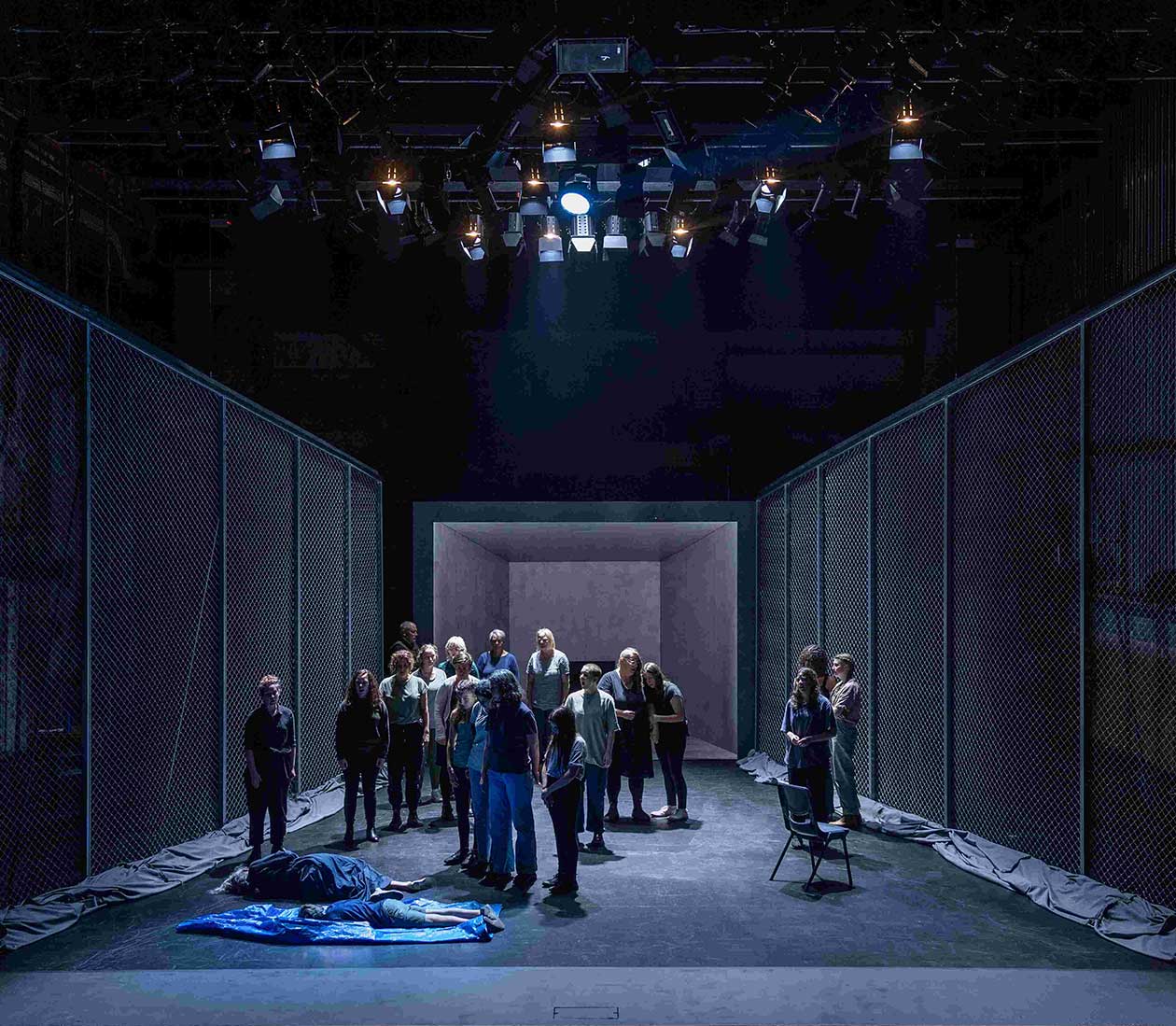
Image: Rosie Hastie.
The opening scene is stark. A high chain-wire fence separates the audience and performers; connection between worlds is severed. Strobe lighting opens the show and unites stage and auditorium as one environment but we are not equal. The women on stage have been removed and isolated. A cold and minimalist environment, cell like and devoid of the specificity of any time and place is revealed. Troy is now a prison. Three monolithic vertical panels of gunmetal grey enclose and echo the cold steel materiality of the chain-wire fencing. This is the first of five spatial arrangements that confine and subject the play’s ‘heroines’ to their brutal fates.
LIMINAL’s approach to the design distils meaning through the use of minimal forms, while creating multilayered, manipulable design elements that can support and heighten the theatrical experience. The design articulates a visual language for the Women of Troy narrative.
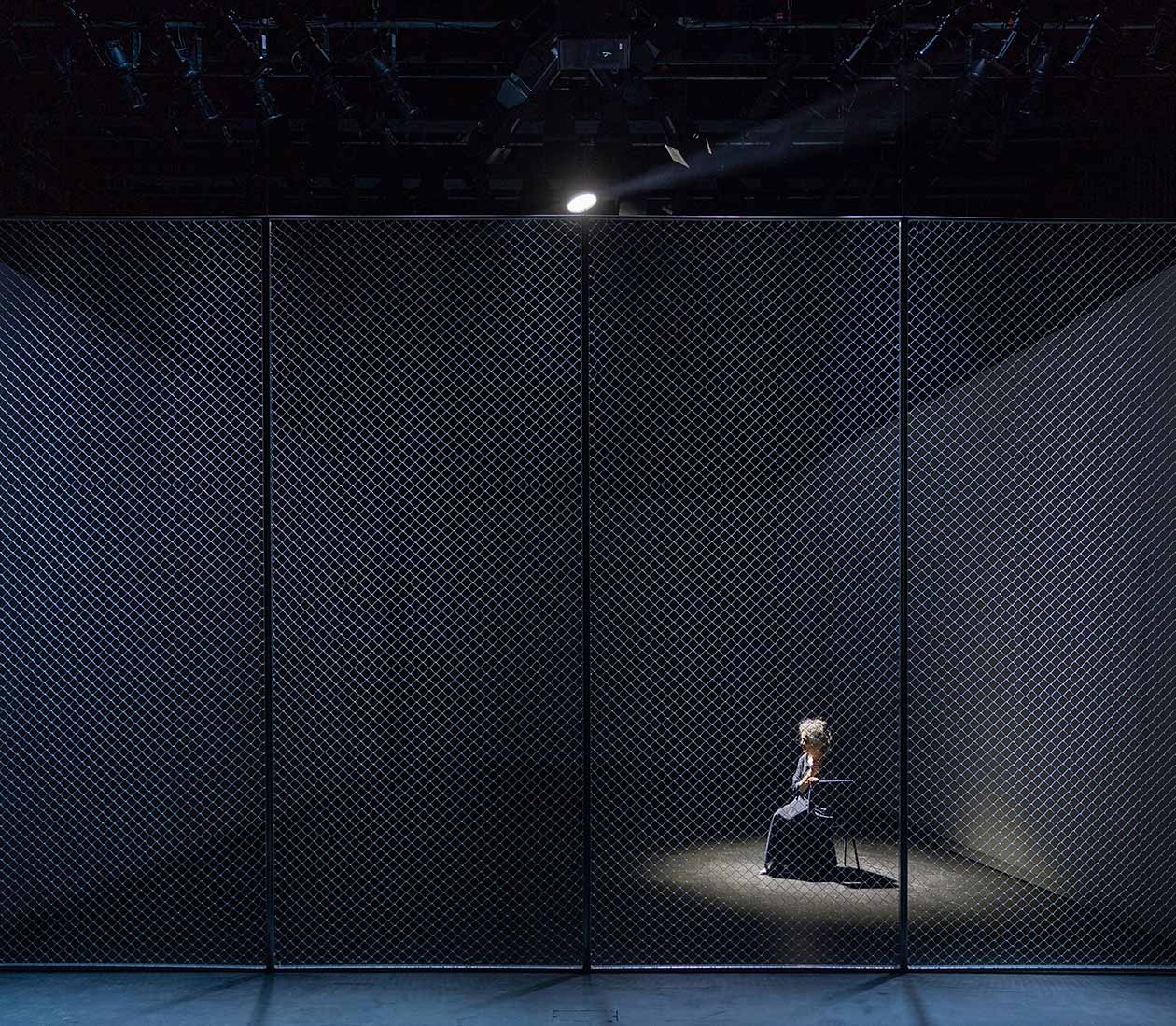
Image: Rosie Hastie
A rare occasion, the Theatre Royal’s House Curtain is replaced with a 5m tall galvanised steel chainwire fence - emphasising the women’s plight as prisoners.
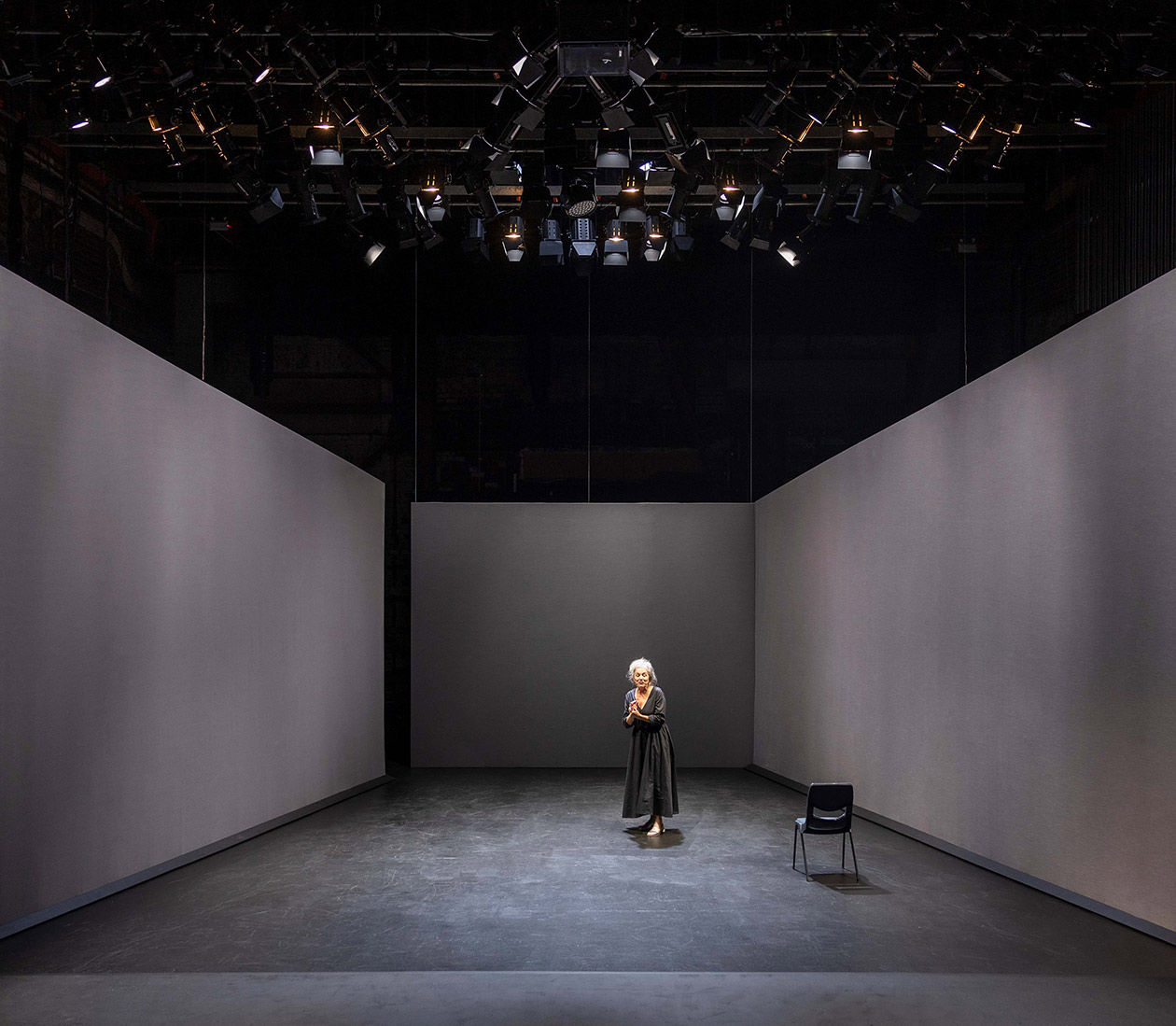
Image: Rosie Hastie
All is not as it seems. The stark, opening scenes convey a caged woman flanked by what appear as solid concrete-grey, planar impenetrable walls.
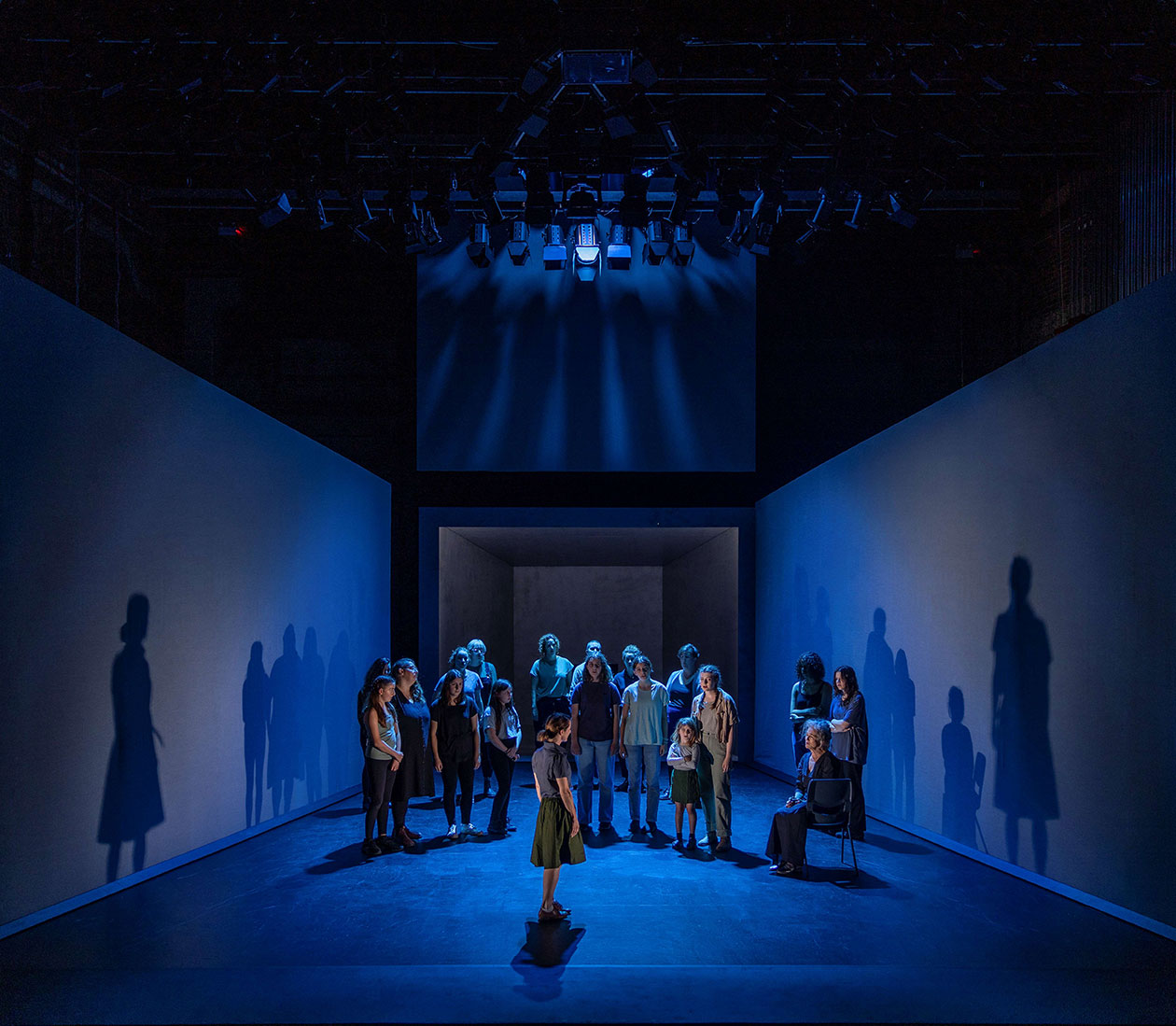
Image: Rosie Hastie
The form of the set is angled and splayed to exaggerate the perspective and sense of depth.
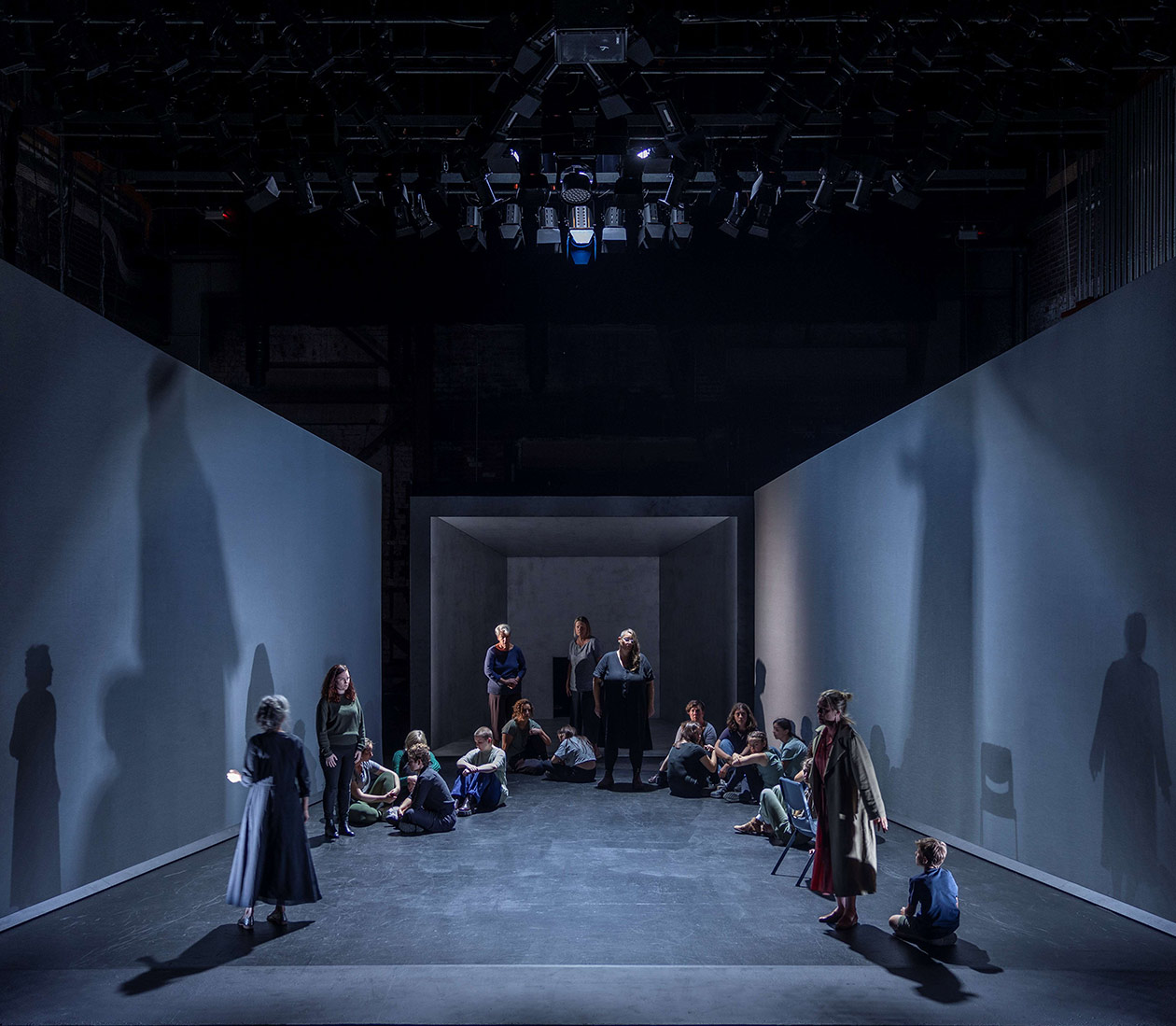
Image: Rosie Hastie
The funnelled plywood form channels the women to exit through a 900mm high opening at the rear of the stage, forcing them to cower as they leave.
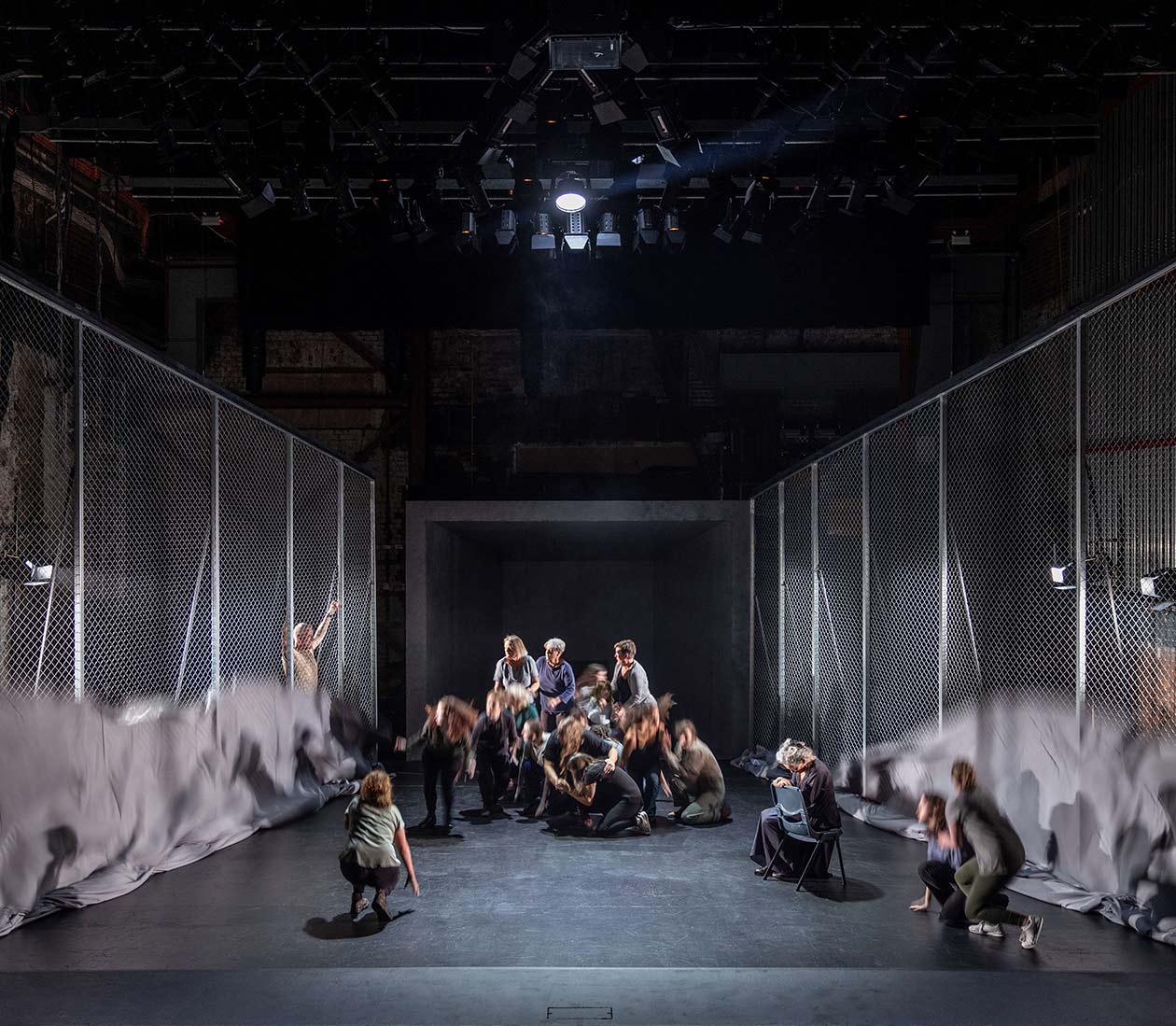
Image: Rosie Hastie
The low-tech, cost effective manually operated Kabuki-Drop adds an element of surprise, symbolising the de-robing of the women and the stripping of their culture.
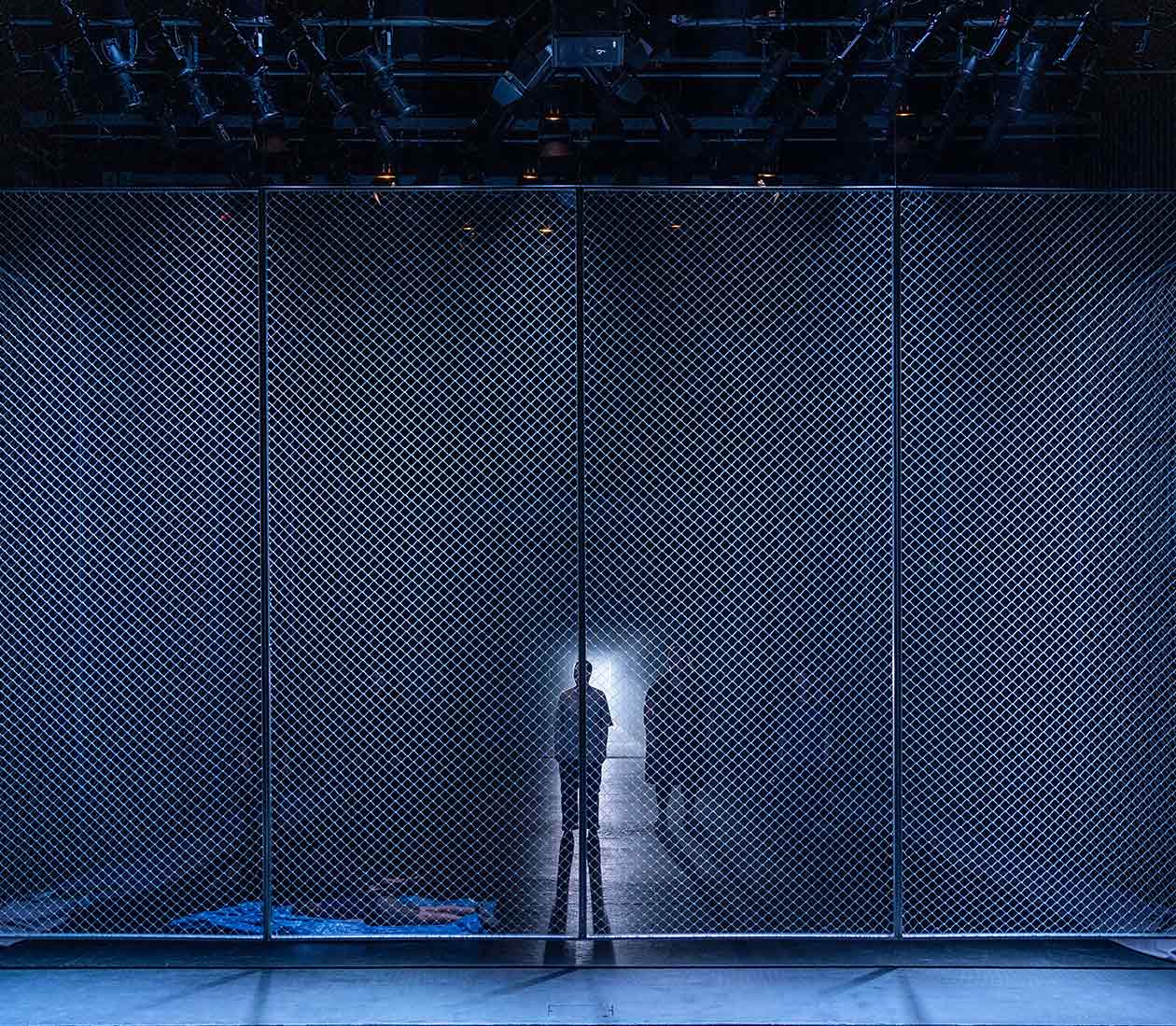
Image: Rosie Hastie
The final scene has the chain-wire fence (House Curtain) lowered again creating an ominous finality, marking the cyclical nature of this story of the displacement and destruction of women and children during war. The audience is left with the despair that this story continues to current time. That this story has gone on for as long as time itself.